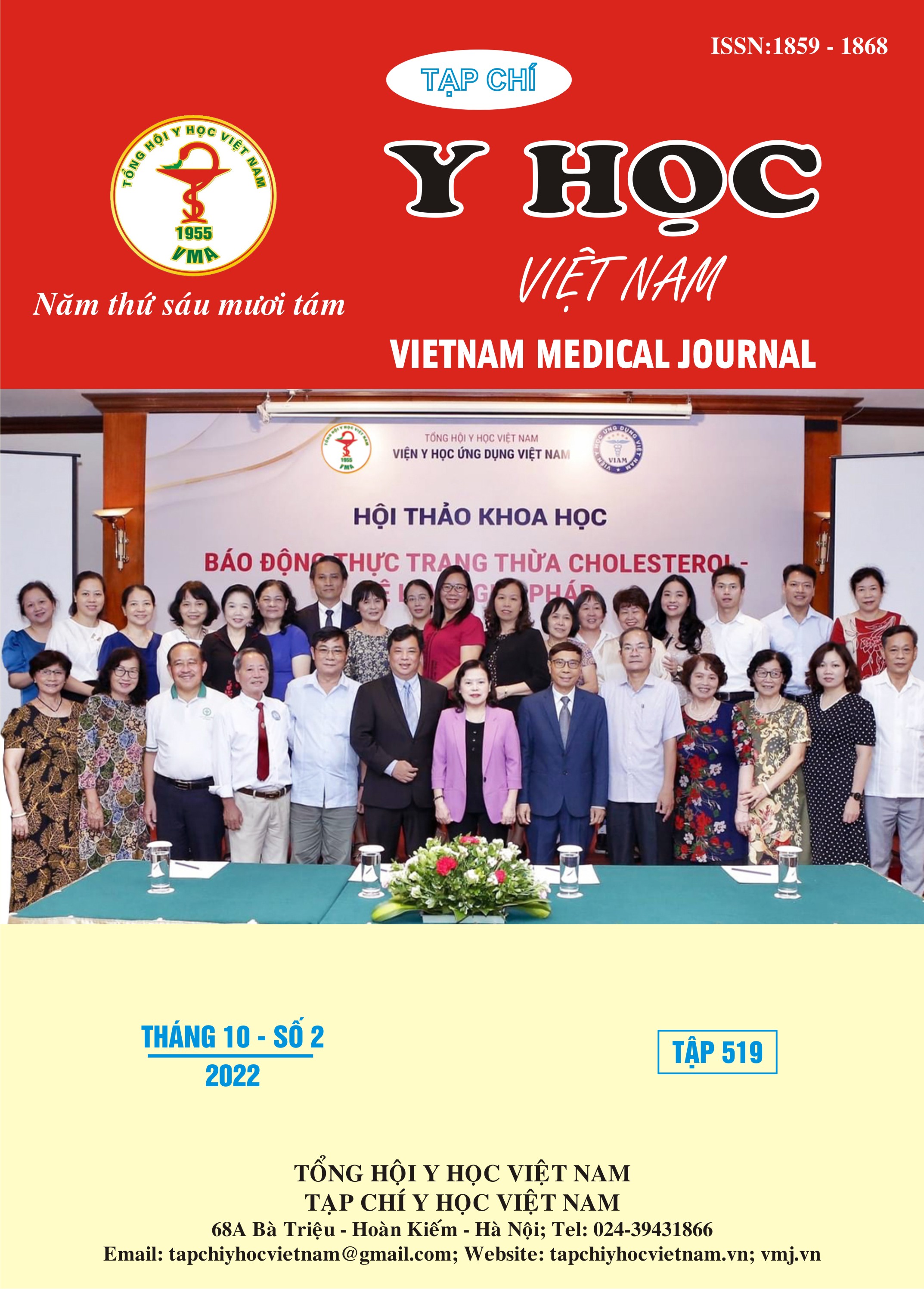INVESTIGATE CHROMOSOMAL ABNORMALITIES IN FETUSES WITH INCREASED NUCHAL TRANSLUCENCY AT TU DU HOSPITAL
Main Article Content
Abstract
Background: In the past, fetuses with increased nuchal translucency (NT) were mainly tested for aneuploidy. Recently, evidence based medicine has shown that incidence of other genomic abnormalities in euploidy fetus. Microarray can detect incremental yield of copy number variants (CNV). This information may be useful in prenatal counseling. Objective: To determine the incidence of microdeletions, microduplications in euploidy fetus with increased NT ≥ 3 mm. Methods: This was a retrospective study of 491 fetus with NT ≥ 3 mm, who underwent invasive procudures, CMA or CNV-seq testing at Tu Du hospital between August 2020 and January 2022. Results: Incidence of aneuploidy was 19,1%. Among 397 euploidy fetus, we detected 9,1% [95%CI: 6,2-11,9] pathogenic CNV (pCNV), 6,3% [95CI%: 3,9-8,7] VUS. The incidence submicroscopic pCNV in general, isolated NT and when other malformations at NT-scan group were 6,0%, 5,6% and 9,5% respectively. The most common pCNV in our study were 22q11 duplication and 16p11.2-p12.2 microdeletion. Maternal age and NT were not associated with high risk pCNV. Conclusions: CMA can detected 9,1% pCNV incremental yield in euploidy fetus in order to assist more accurate prenatal counseling.
Article Details
Keywords
Increased nuchal translucency, , Copy number of variants (CNV), Microarray
References
2. Kagan KO, Avgidou K, Molina FS, Gajewska K, Nicolaides KH. Relation between increased fetal nuchal translucency thickness and chromosomal defects. Obstet Gynecol. Jan 2006;107(1):6-10. doi:10.1097/01.AOG.0000191301.63871.c6
3. Jelliffe-Pawlowski LL, Norton ME, Shaw GM, et al. Risk of critical congenital heart defects by nuchal translucency norms. Am J Obstet Gynecol. Apr 2015;212(4):518 e1-10. doi:10.1016/j.ajog.2014.10.1102
4. Sotiriadis A, Papatheodorou S, Eleftheriades M, Makrydimas G. Nuchal translucency and major congenital heart defects in fetuses with normal karyotype: a meta-analysis. Ultrasound Obstet Gynecol. Oct 2013;42(4):383-9. doi: 10.1002/uog.12488
5. Ghi T, Huggon IC, Zosmer N, Nicolaides KH. Incidence of major structural cardiac defects associated with increased nuchal translucency but normal karyotype. Ultrasound Obstet Gynecol. Dec 2001; 18(6):610-4. doi:10.1046/j.0960-7692. 2001.00584.x
6. Grande M, Jansen FA, Blumenfeld YJ, et al. Genomic microarray in fetuses with increased nuchal translucency and normal karyotype: a systematic review and meta-analysis. Ultrasound Obstet Gynecol. Dec 2015;46(6):650-8. doi:10.1002/uog.14880
7. Lund IC, Christensen R, Petersen OB, Vogel I, Vestergaard EM. Chromosomal microarray in fetuses with increased nuchal translucency. Ultrasound Obstet Gynecol. Jan 2015;45(1):95-100. doi:10.1002/uog.14726
8. Riggs ER, Andersen EF, Cherry AM, et al. Technical standards for the interpretation and reporting of constitutional copy-number variants: a joint consensus recommendation of the American College of Medical Genetics and Genomics (ACMG) and the Clinical Genome Resource (ClinGen). Genet Med. Feb 2020;22(2):245-257. doi:10.1038/s41436-019-0686-8
9. Jin H, Wang J, Zhang G, et al. A Chinese multicenter retrospective study of isolated increased nuchal translucency associated chromosome anomaly and prenatal diagnostic suggestions. Sci Rep. Mar 10 2021;11(1):5596. doi:10.1038/s41598-021-85108-6
10. Egloff M, Herve B, Quibel T, et al. Diagnostic yield of chromosomal microarray analysis in fetuses with isolated increased nuchal translucency: a French multicenter study. Ultrasound Obstet Gynecol. Dec 2018;52(6):715-721. doi:10.1002/uog.18928.


